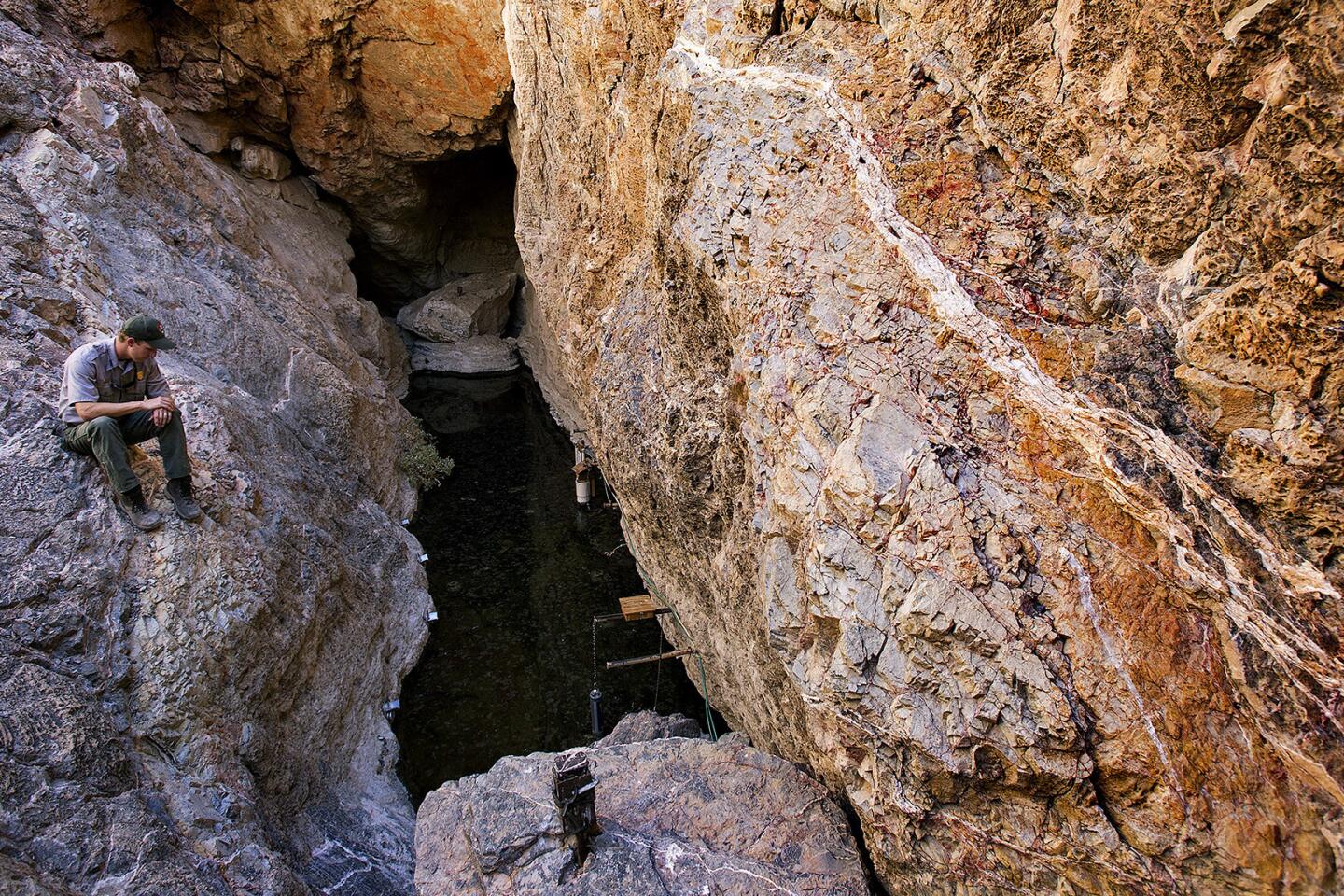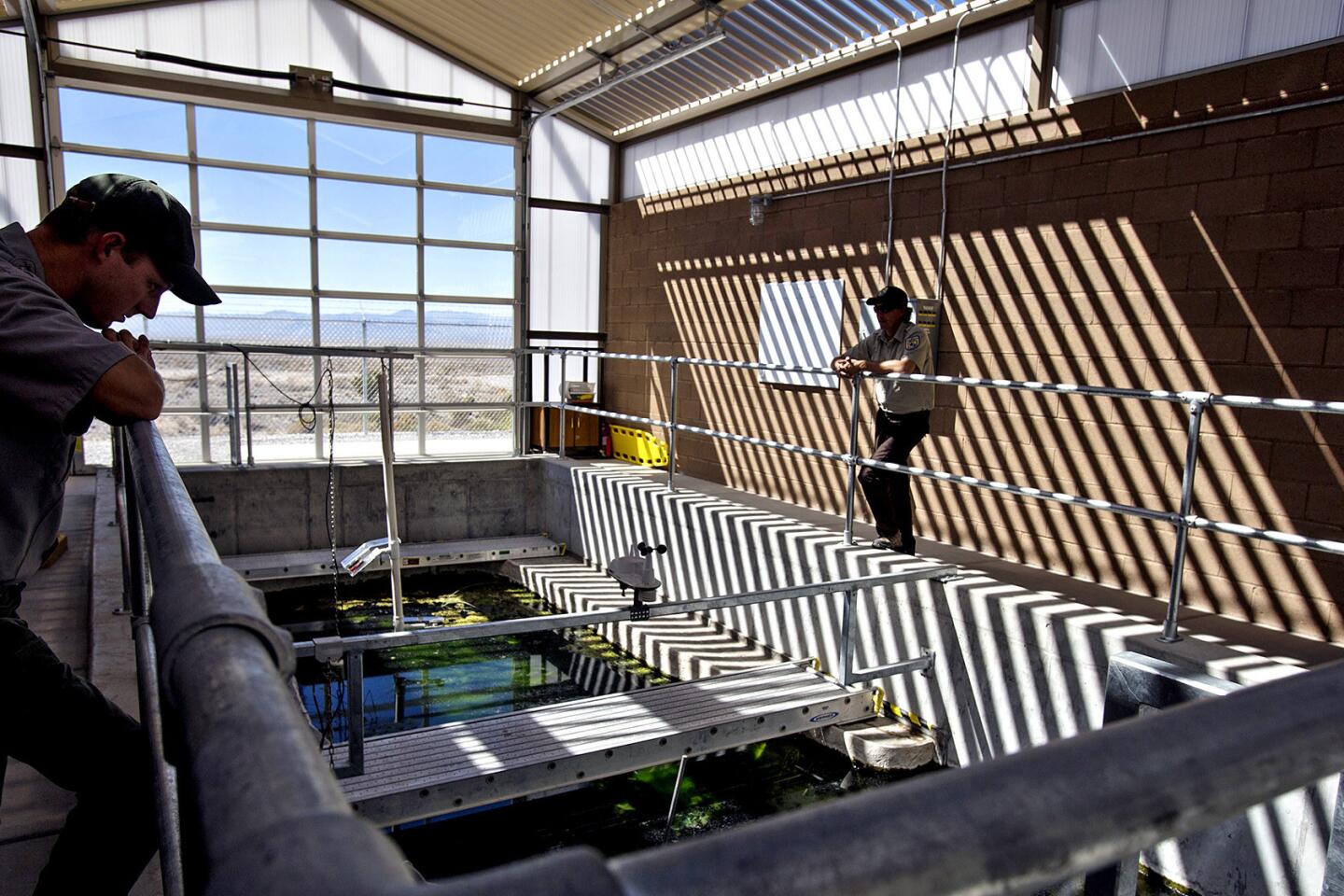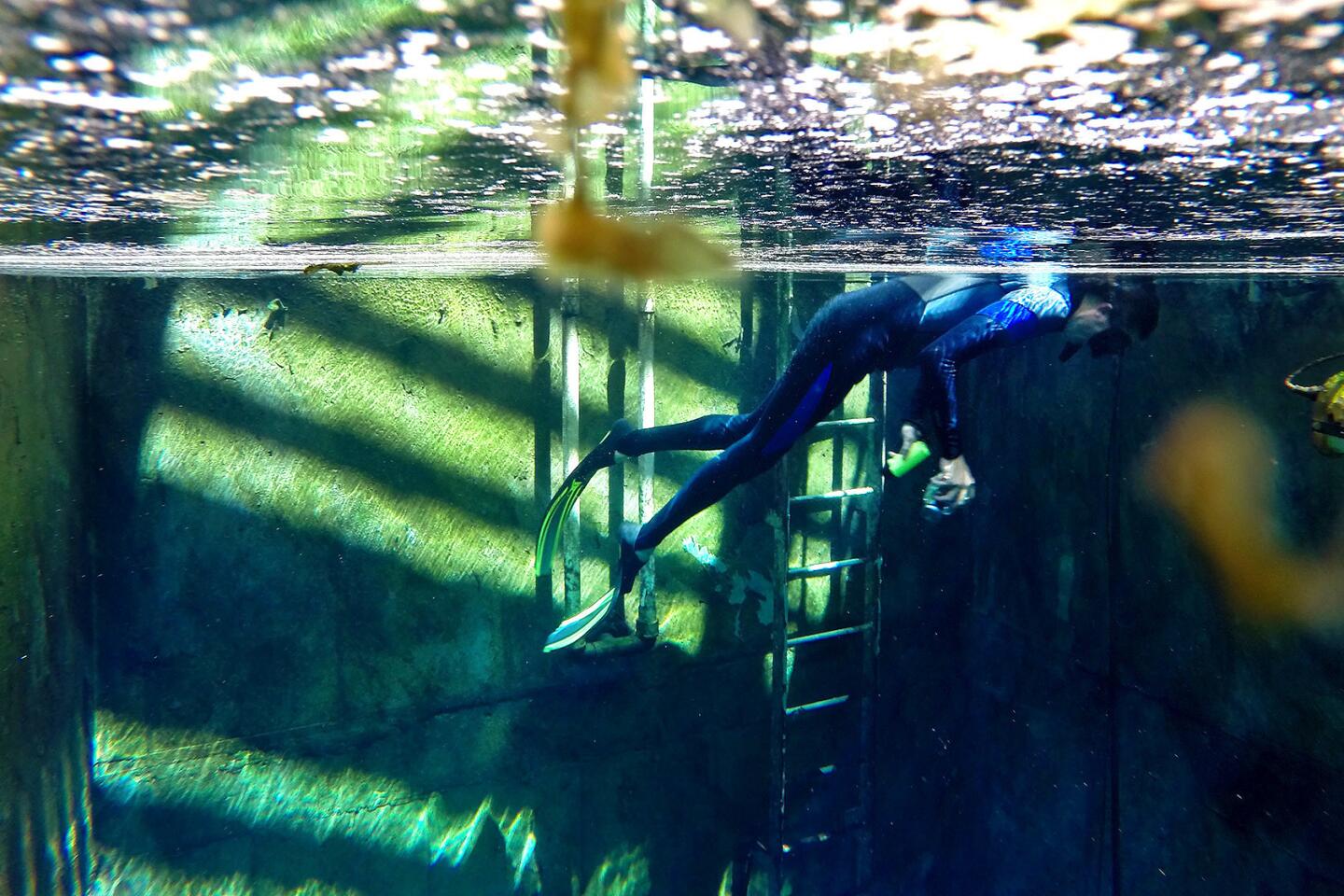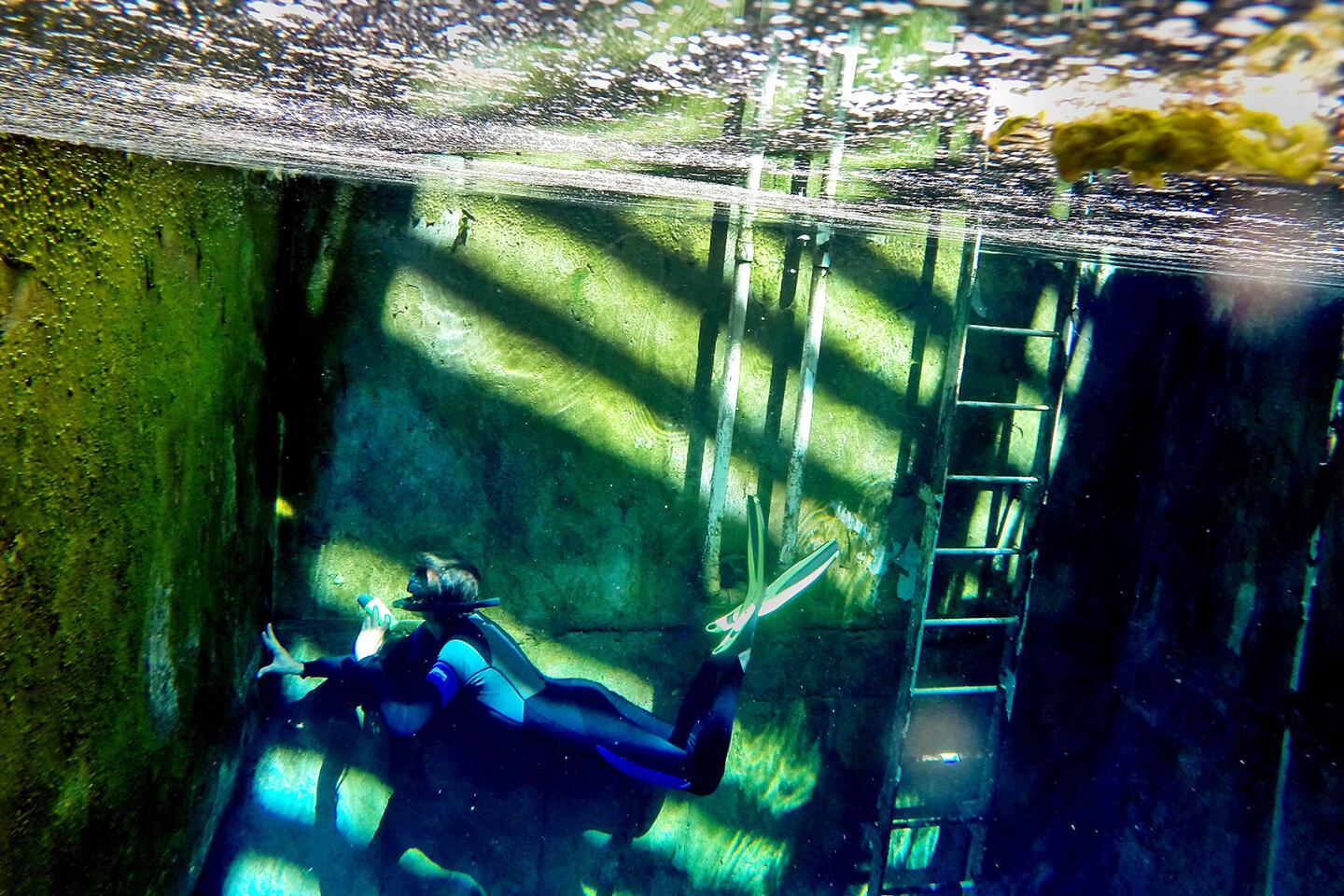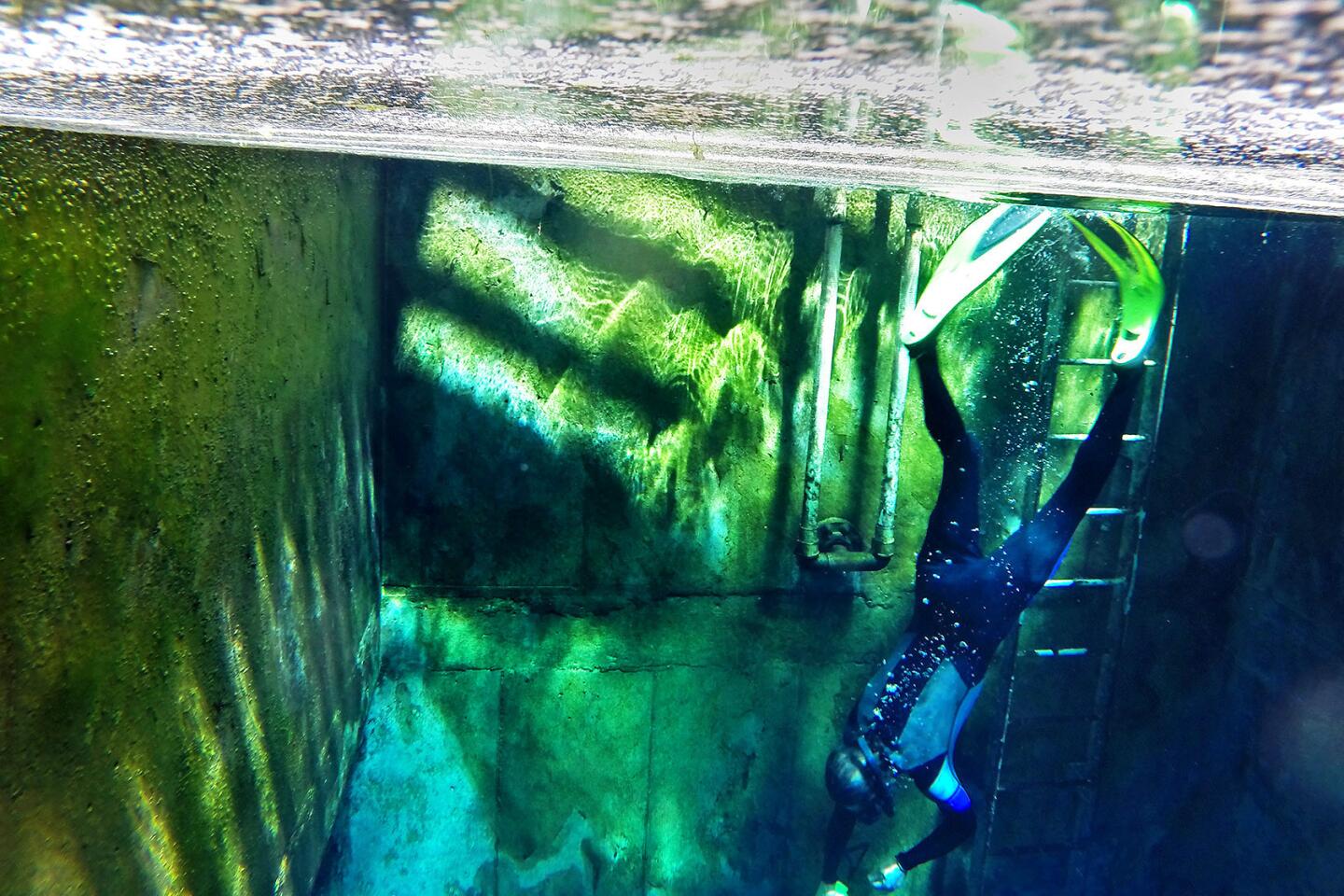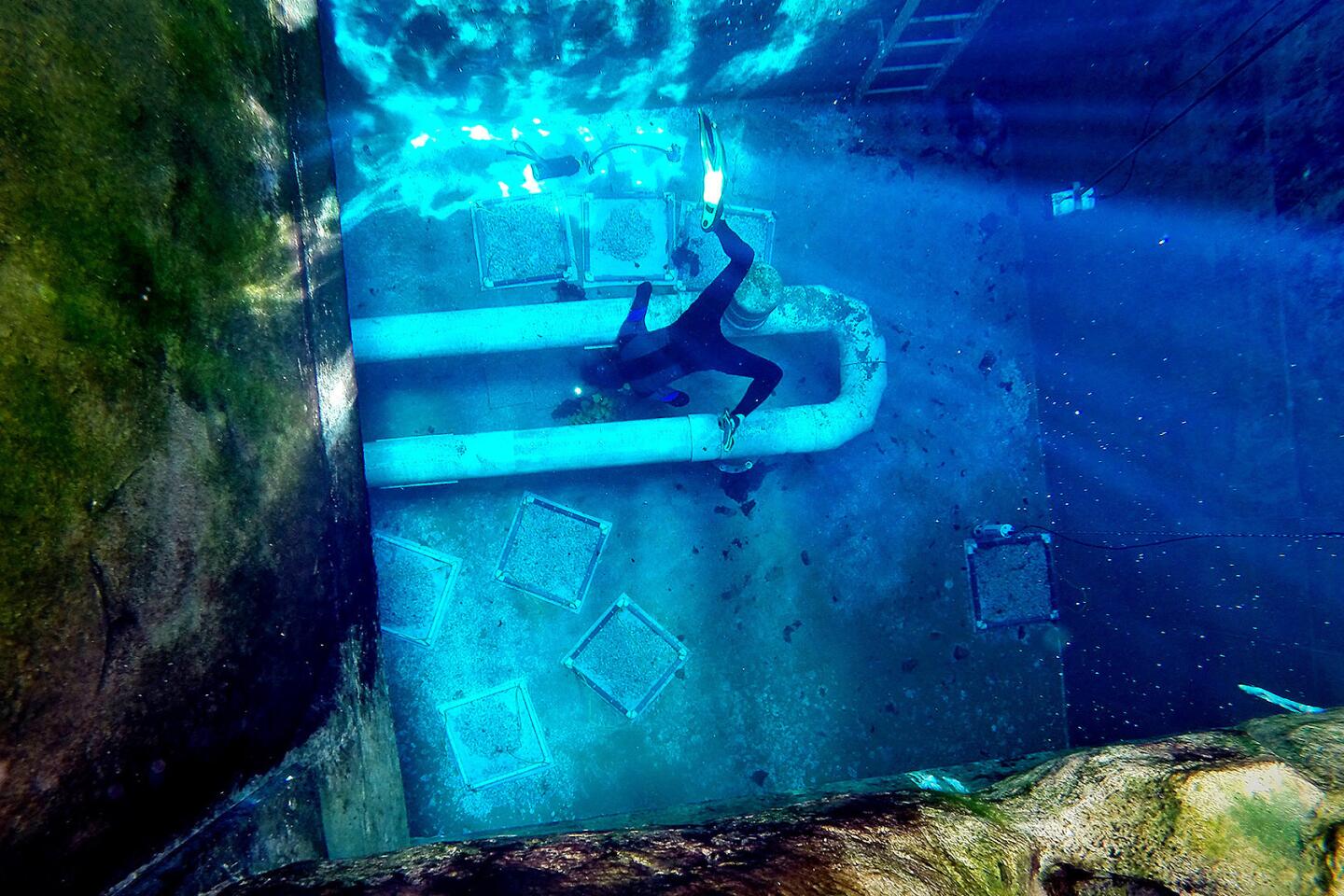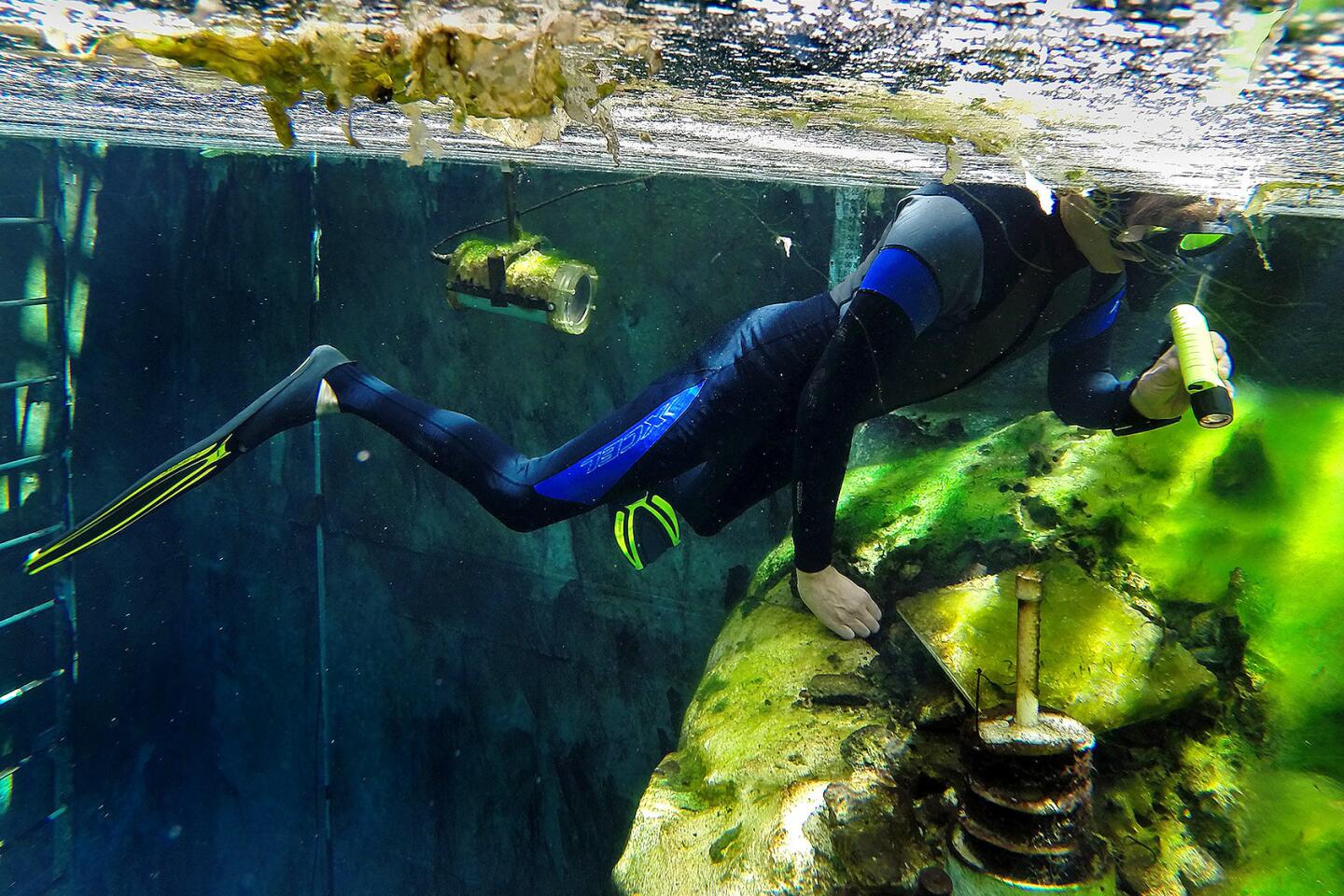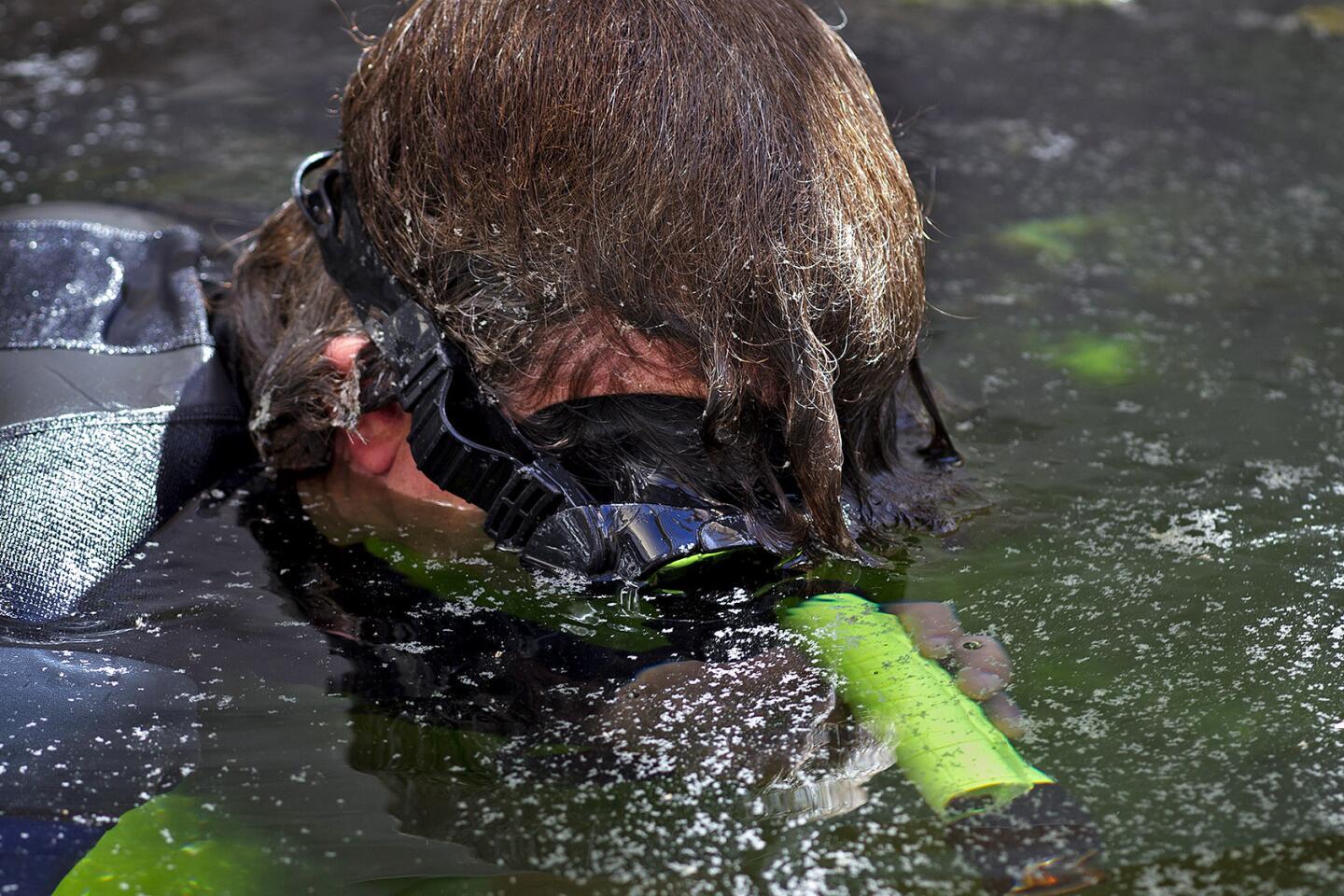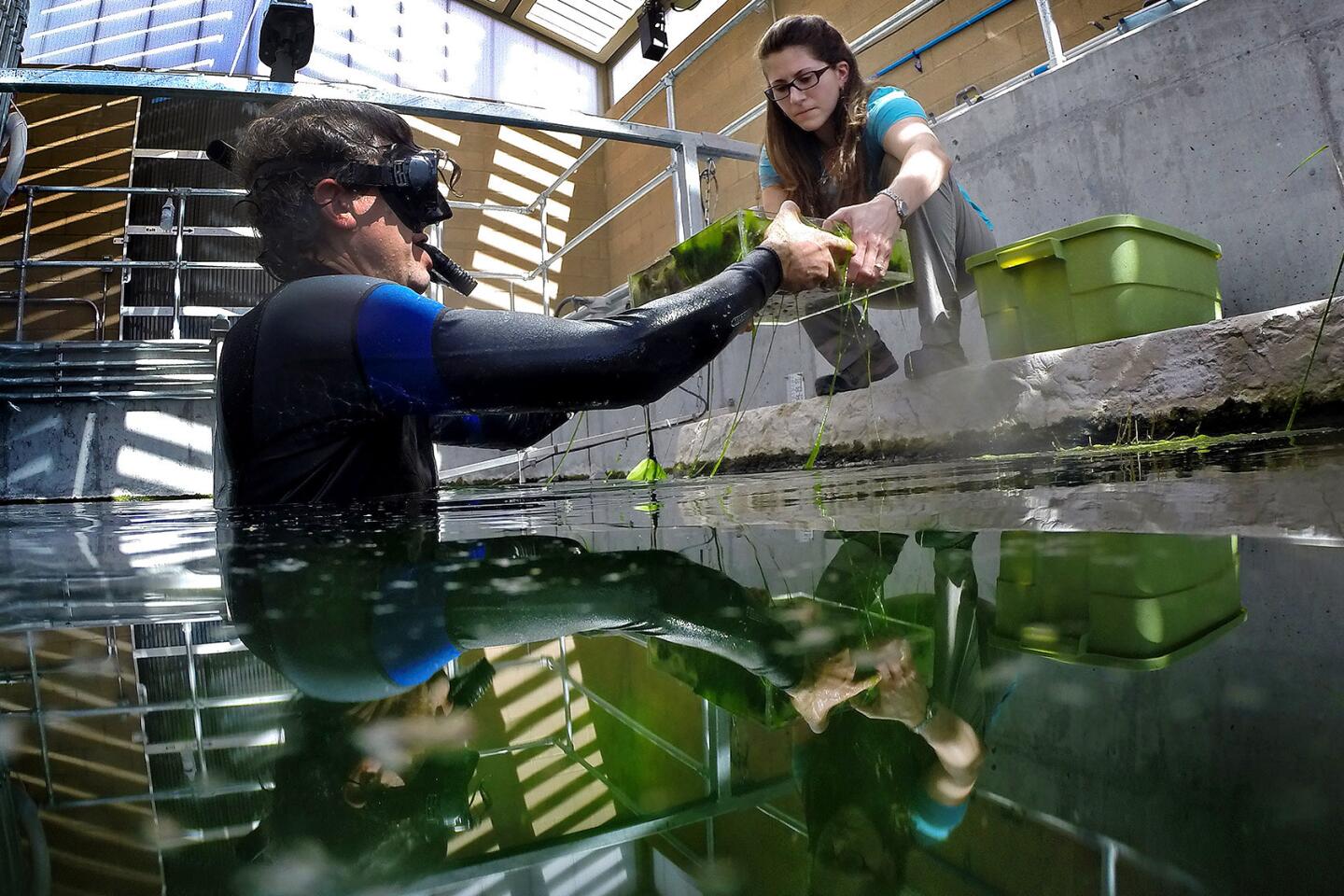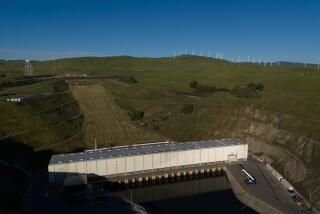A man-made attempt to save the rarest fish on Earth
Reporting from Amargosa Valley, Nev — Olin Feuerbacher took a deep breath and plunged into the warm aquamarine water of a 100,000-gallon concrete and fiberglass tank in the middle of the Mojave Desert.
Twenty feet beneath the surface, Feuerbacher inched his way across the bottom, methodically scanning the darkened corners with a flashlight.
Fifteen seconds into the dive, his light shone on a telltale shape: a tiny ghostlike creature with eyeballs shimmering like mirrors.
He surfaced with a grin and some good news: “We have a new baby down there.” It was a Devils Hole pupfish, the rarest fish on Earth.
Scientists at the Ash Meadows Fish Conservation Facility here are trying to establish a captive colony of the fish in a tank built as a replica of the nearby natural rock tub known as Devils Hole, where the species has existed since the Ice Age.
It hasn’t been easy. Over the last year, only five newborns have been detected in the tank, which is home to all 29 of the adult Devils Hole pupfish now in captivity. Still, the newborns represent a biological milestone: They are the first hatched from eggs produced by fish that were born and raised in captivity.
Federal biologists are experimenting with new care and feeding techniques they hope will boost reproduction rates in the $4.5-million tank.
“We want a healthy, happy and self-sustaining captive population of a few hundred pupfish in the tank,” said Feuerbacher, a lanky 42-year-old fisheries biologist with an easy smile.
A captive population, he added, “would also allow us for the first time to work with the species in laboratory conditions and fill gaps in our basic understanding of its egg production rates, hatch rates and larvae survival.”
Scientists have no plans to stock Devils Hole with captive-bred newcomers. The DNA of the wild and captive populations could begin to diverge after just a few generations, and bringing them back together would risk altering the distinct genetic makeup of the inch-long iridescent blue fish.
“When you bring a creature into captivity, evolution and selectivity don’t stop,” said Steven Beissinger, a professor of environmental science, policy and management at UC Berkeley and an expert on the pupfish. “Eventually, the captive fish may not have the same coloration, body size and behavior as those in Devils Hole.”
Exactly how and when the fish ended up in Devils Hole remains a mystery. But about 100 of the federally endangered species still swim in the wild, spa-like pool, about 90 miles northwest of Las Vegas in Death Valley National Park.
The species was decimated before the 1960s by groundwater pumping and later by the very scientists who were trying to protect the fish.
In what has come to be known as the pupfish crisis of Sept. 11, 2004, empty fish traps that were stacked on dry land were sent tumbling into the water by a flash flood. The traps, made of glass jars outfitted with inverted funnels, had been used by researchers who caught, studied, then quickly released the fish.
The researchers later discovered several intact jars with 80 expired pupfish in them — roughly one-third of the population at the time.
The species faces continuing threats from the Mojave’s changing climate.
Devils Hole is heated geothermally to a constant 92 degrees, which is near the upper physiological limit for the species. Mark Hausner, a research biologist at the Desert Research Institute in Reno, warns that another degree or two higher could destroy pupfish reproduction and egg development.
In early 2013, the population dwindled to a record low of 35 pupfish in Devils Hole, a sloping limestone depression with a pool of water 10 feet across, 70 feet long and more than 500 feet deep.
Given that Devils Hole pupfish have a life span of only about 12 months, “a real panic set in last year,” recalled Daniel Bailey Gaines, a fisheries biologist with the National Park Service in Death Valley. “We started feeding them a special fish chow of brine shrimp fortified with a blue-green algae. We also installed clumps of aquarium plants where babies could hide from hungry adults.”
In a collaborative effort involving the U.S. Fish and Wildlife Service, the National Park Service and the Nevada Department of Wildlife, biologists also collected a batch of Devils Hole pupfish eggs and took them to the conservation facility here, where they were raised to adulthood in laboratory aquariums, then transferred to the newly completed tank.
The eggs produced the 13 female and 16 male adult fish in captivity. A plain brick building houses the tank, which resembles Devils Hole in shape. The tank is only 20 feet deep, but includes subterranean cavern-like recesses that extend beyond the building’s foundations.
Cameras monitor the pupfish’s every move as they paddle through the water, which is kept at a constant 86 degrees, since scientists believe the fish reproduce more frequently in cooler water.
Twice a month, Feuerbacher dives into the tank to assess the status of its tenants and their creature comforts. With a diving mask, snorkel and fins, it takes him about 10 minutes to retrieve six egg recovery mats, which he hands over to fisheries biologist Ambre Chaudoin.
Chaudoin, 37, then retreats to her laboratory, where she uses a microscope and fine needles to search for minute pupfish eggs on the 12-by-12-inch fibrous mats while listening to Vivaldi and Daft Punk.
“It’s tedious work,” she said, “but finding an egg makes it all worthwhile.”
Over the last month, she’s teased out four eggs, which were carefully placed in aquariums and then monitored for signs of developing embryos. None of them produced larvae.
So far, the only eggs that have hatched into newborns were deposited in locations other than the mats, and therefore were undetected by facility aquaculturists, who prefer to have more control over embryo development.
Biologists hope to boost reproduction by adding microscopic creatures known as rotifers and ostracods to their menus. When possible, they’d like to raise newborns in separate laboratory aquariums where predatory adults cannot eat them.
“With this tank, we have a real chance of establishing a lifeboat population that will have a lot to teach us about survival,” Chaudoin said. “We’re cautiously optimistic.”
But the scientists are aware they have their work cut out for them, she said: “Over the past 40 years, numerous previous attempts to raise Devils Hole pupfish in captivity were unsuccessful.”
Twitter: @LouisSahagun
